The SteelSeries Arctis Pro Gaming Headset Lineup: GameDAC Or Wireless
by Brett Howse on March 13, 2018 9:00 AM EST- Posted in
- Headset
- Audio
- SteelSeries
- Accessories
- Arctis Pro
Arctis Pro Wireless
Since we’ve already gone over the wired model, there’s less to say with the wireless version, since it’s almost an identical design, but with wireless capabilities. From a design standpoint, it loses the RGB LED lighting that the wired model offers, to prolong the battery life. It adds buttons on the right speaker to turn on the set, and pair it with Bluetooth, and the right speaker cover is now a battery cover. Other than those changes, from a design standpoint, the Arctis Pro Wireless is identical to its wired model, with same speaker drivers with a 10 Hz to 40 Khz range, and the same ClearCast microphone. But, it has enough of its own features that it really brings its own take on the design.
While it’s the same externally, and carries the same drivers, the Wireless model doesn’t share the amazing DAC as the wired model, since the audio has to be transmitted to the headset digitally, so a DAC has to be built-in, and it’s not the ESS Sabre 9018.
SteelSeries offers plenty of choices for connection as well. The transmitter base station offers USB input, optical input and output, and 3.5 mm input and output. The headset itself also features the same proprietary cable connector as the Arctis Pro, and it ships with an adapter to 3.5 mm to you can connect directly to the headphones to avoid wireless altogether. You can also just connect a 3.5 mmm right to the headset if necessary. Finally, the headset also features a Bluetooth connection to pair with practically any mobile device. For Bluetooth, the Arctis Pro Wireless offers Bluetooth 4.1 with A2DP, HFP, and HSP profiles.
One of the coolest features is that you can listen to both the Bluetooth and the wireless audio at the same time, so you can stream your phone to your headset, use it to answer calls, and all the while be listening to audio from your PC or PS4.
If you’re on a PC, the best way to use the Arctis Pro Wireless is with the transmitter base station connected over USB. It, like the wired model, appears as two separate audio sinks in Windows, so you can mix your game and chat levels as necessary. The transmitter is 2.4 GHz, which might be an issue in some locations, but it’s lower latency than the Bluetooth connection. The transmitter also features an OLED display which can show the status of the batteries, volume, and more. The volume knob on the headset also is the same volume as the transmitter, unlike the wired model, and avoids any confusion. The transmitter is rated for up to 40 feet, and there was never any issue with range anywhere in the house.
One of the pain points I’ve had with wireless headphones is the battery, which is a tricky proposition. If you want long battery life, you generally need a very large battery, which adds mass to the headset. Then, when you’re done with your session, you need to either plug in the headset to power, or use a dedicated charging stand. That’s never been an elegant solution, and SteelSeries has decided to go with dual batteries instead, which works very well. The transmitter base station has a slot on the side to hold and charge one battery, while the other is in use. Then you just quickly swap them when it dies. It’s a solution that’s been used before by with the first use in gaming that I can recall is the Logitech G7 mouse, and it worked very well on that. On the SteelSeries headset, you just pop the magnetically attached right speaker cover off, and switch out the battery. After a couple of times, it only takes a few seconds.
You can also charge it directly using a micro USB connector on the bottom of the headset, in case you’re travelling and away from the base station.
The battery life has been pretty solid as well, and even at reasonable volume levels, it’s been very easy to get eight to ten hours out of the battery. The transmitter base station will display the battery level on the display, so you can quickly get an idea how much is left, but it would be nice to get a bit more warning as the battery is about to expire.
The headset also features a built-in equalizer, and much of the same functionality as the GameDAC unit itself. This makes it very portable, and no software is ever required to get the same audio quality anywhere you use the headset.
All wireless headsets have noise, which you’ll hear as a low-level hiss, and the Arctis Pro Wireless has this as well. It’s not distracting, but compared to the absolute silence of the wired model, it’s something you’ll notice.
Overall the wireless model fixes several of the pain points of wireless gaming headsets, which most notably is the battery charging, and the SteelSeries solution is fantastic. The functionality added to the transmitter including the EQ, chat mix, and more, really provides a lot more options for the owner than a typical headset would. It’s a great setup.


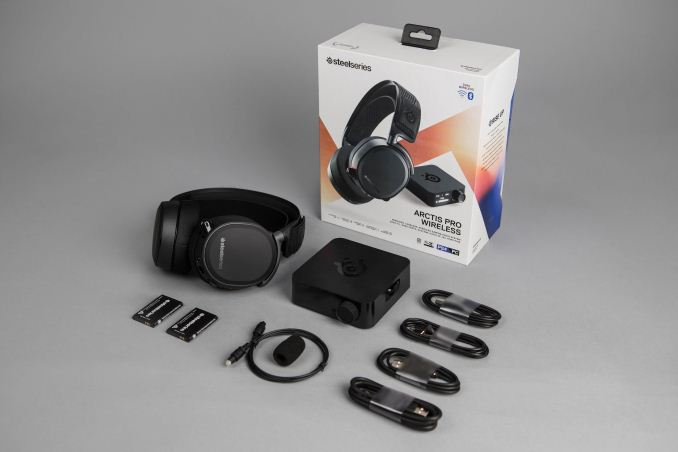
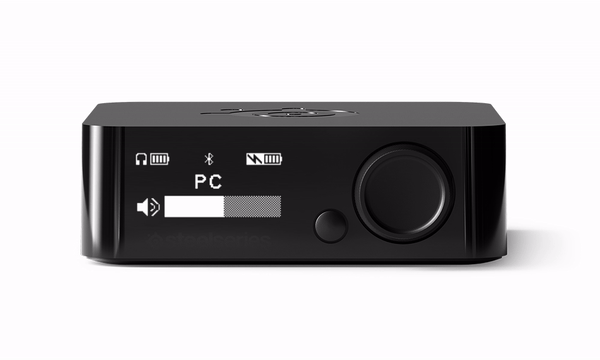
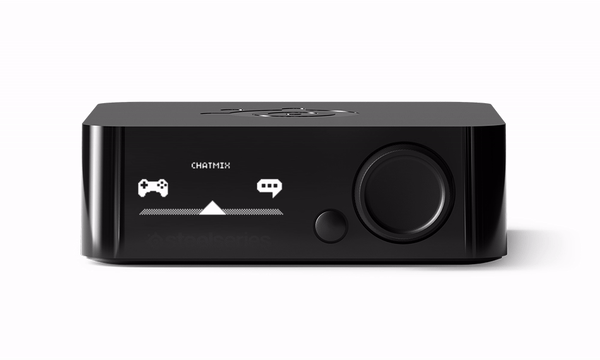
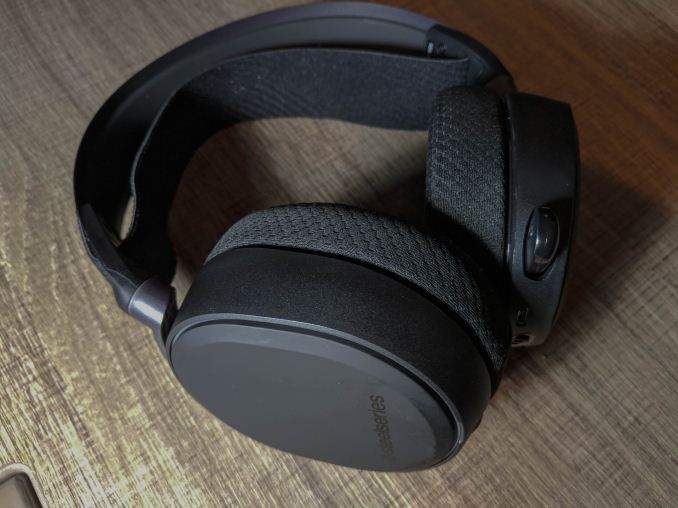
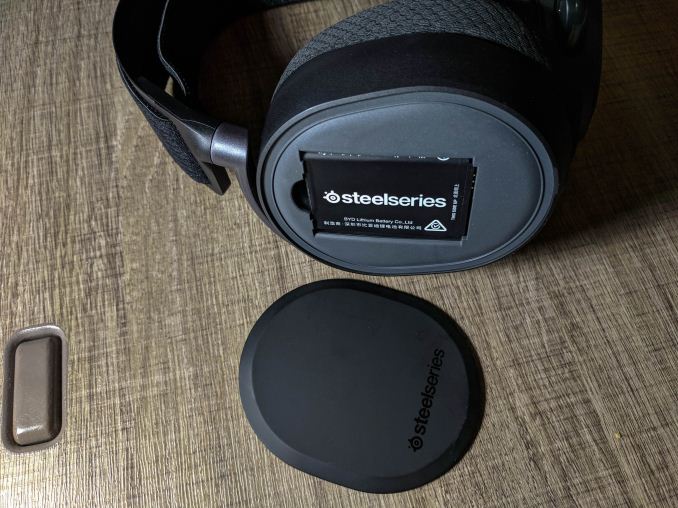








32 Comments
View All Comments
jimjamjamie - Tuesday, March 13, 2018 - link
So is this an advert or..?Stuka87 - Tuesday, March 13, 2018 - link
Pretty much every product a site like AnandTech reviews is given to them by the company that makes the product, but it doesn't read like an advertisement. It reads like a review that describes the product.Dr. Swag - Tuesday, March 13, 2018 - link
This doesn't feel like a review, but an announcement article, hands on, or advert.jordanclock - Tuesday, March 13, 2018 - link
I mean, it goes over the features, critiques them and then presents an opinion on the product. Sounds like a review to me.jordanclock - Tuesday, March 13, 2018 - link
But I will admit that this review doesn't seem very comprehensive. It's a lot of subjective assessment and the only objective measurement comes from the vendor.Samus - Tuesday, March 13, 2018 - link
I fail to see a real improvement over the Siberia 800. In fact, some aspects feel like a downgrade, particularly the lack of user replaceable\swappable batteries.One of the main selling points of the Steelseries H (which I own, predated the Siberia but is the same thing) was that it included two batteries and the base could charge one while the other was in use.
Samus - Tuesday, March 13, 2018 - link
Ahh, after actually reading the review and not just the first page, I see the Arctis Wireless does include two batteries and resembles the Siberia 800. I don't really see a difference other than the subjectively different driver tuning...Brett Howse - Tuesday, March 13, 2018 - link
Always read past the first page!These are a replacement for the Siberia 800 and offer better drivers. Siberia was 20-20Khz these are 10-40Khz. Plus the updated band from the Arctis lineup.
we - Thursday, March 15, 2018 - link
One thing irritated me somewhat while reading was that you seem to be giving the impression that headset frequency response is the primary indicator of headset sound quality, which is somewhat misleading. You can have two headphones, both with an excellent and just about identical frequency response, that sound very different, and one may even sound downright awful. A headphone with a mediocre frequency response may even sound better than one with an "ideal" on-paper frequency response. There are various reasons for this. One is that companies don't necessarily measure frequency response in the same way. Another is diaphragm linearity and break up. A cheap diaphragm may have excellent frequency response measured with a simple sine-wave sweep. But if it has to concurrently deal with strong bass tones and high frequency harmonics, the bass tones may push the the diaphragm outside of its most linear and most stable operating range, and as a result the HF tones may audibly suffer. You can't detect this kind of behaviour with typical frequency response measurments. Things like intermodulation distortion, driver linearity and break-up, damping and resonance characteristics of the transducer, its components and its housing can seriously influence subjective sound quality. Of course everything else being equal, the headphone with the better frequency response will outperform the one with a poorer frequency response. (I am not saying there is anything wrong with the headset tested. It may well be excellent, and apparently much thought has been invested in attaining high quality sound. In all probability, the designers know very well that a decent frequency response should be a given at this price point, and is only one of many aspects of design that have to be carefully considered to create a good headset)Brett Howse - Saturday, March 17, 2018 - link
It's not just frequency response, but that's a bit factor on these if you look at the graph. These don't have the boominess you'd see in some headsets where the bass response peaks at 60-100Hz and falls off drastically from there.